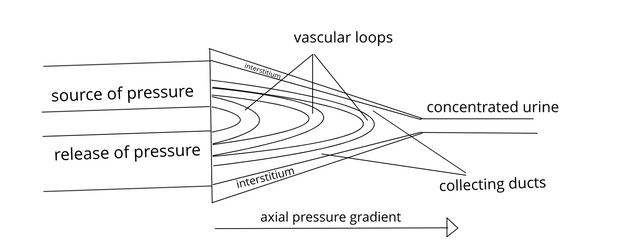Kidney physiology, a "sequential multiplier" powered by the heart?
Consider the name of the renal pyramids, and that it points to them being pyramidal. This anatomy suggests the “urine compartment”, the nephrons and collecting ducts, narrows from the base of the renal pyramid (cortex) to the top (papilla). This anatomical arrangement likely has a role in the reabsorption of 99% of all filtrate produced per day, simply by providing resistance. If this architecture is able to contribute to reabsorption of water, and, by that, concentration of urine, and if this concentrated urine to some extent equilibrates with the surrounding medullary interstitium, then it would provide a “single effect” for an osmotic multiplier. This multiplication effect could be called “sequential multiplication”, since each “bolus” of urine filtered contributes a “single effect” to the axial osmolarity gradient for the next “bolus”, and so forth. This osmotic multiplier would conveniently rely only on pressure provided by the heart, an organ that invests 1/5th of its stroke volume in the kidney, and, on fascial tension within the kidney parenchyma and capsule.
